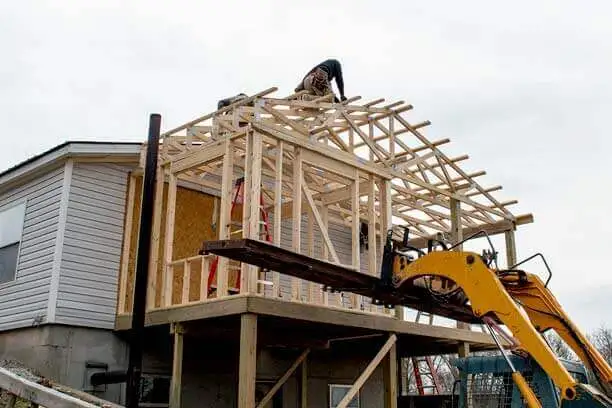Planning a Home Addition: Your Questions Answered


You love your home. It’s where you’ve hosted countless neighborhood barbecues, Christmas mornings and gameday potlucks — but now it’s feeling a little snug. Maybe you could use a dedicated home office, another bathroom or even just an extended porch for your smoker. Would adding an addition to your house be right for your family?
Home addition costs vary by type and location, but expect to budget up to $200 per square foot (or more if it’s a second story). This includes design, demolition, foundation, floors, roof, ceiling, walls and fixtures. Even barring any issues, it’s easy to approach — and surpass — $50,000 for a single room. Work through these questions before making your decision.
If you’re facing a seriously outdated kitchen or simply outgrowing your home, the answer might be obvious. Here are some tips to guide your decision to remodel, add or buy if the right choice isn’t so clear.
Remodel if…
Add on if…
Move if…
While room additions do increase your home’s value, you shouldn’t do it just to make more upon resale. Your main goal when planning a home addition should be to make your house more livable. If you pay $40,000 for a bonus bathroom, don’t expect a dollar-for-dollar return. HomeAdvisor reports bathrooms earn a 53% return on investment (ROI), while primary bedroom and bathroom additions earn a 63% ROI.
Both options have important considerations. You may want to build a second story addition if you have limited land space or want to avoid property line set-back rules. You’ll need to account for a stairwell, significant demo to walls and ceilings, and a higher cost.
Depending on the location, building out is perhaps a less intrusive idea for an addition to your home. However, your contractor will need to excavate land, pour a foundation, construct walls and extend the roof. On a smaller scale, bump-out additions can provide extra space for showers, counters, closets or even rooms without the hassle of a full addition.
In general, adding a new garage, living room or bedroom will add value to your house and give you the most bang for your buck. Why? There’s no plumbing and little electrical work. Bathrooms and kitchen additions have major impact on your living space, but will cost significantly more due to plumbing, electrical work, appliances and fixtures.
Alternatively, outdoor or indoor-outdoor combination spaces can provide your family with extra space at a more budget-friendly option. HomeAdvisor estimates basic mudrooms and sunrooms to cost between $8,000 and $16,000, while porches and balconies start at $5,000.
As your home changes, your homeowners insurance should, too. Chat with your Farm Bureau agent to make sure your policy is up to date today.